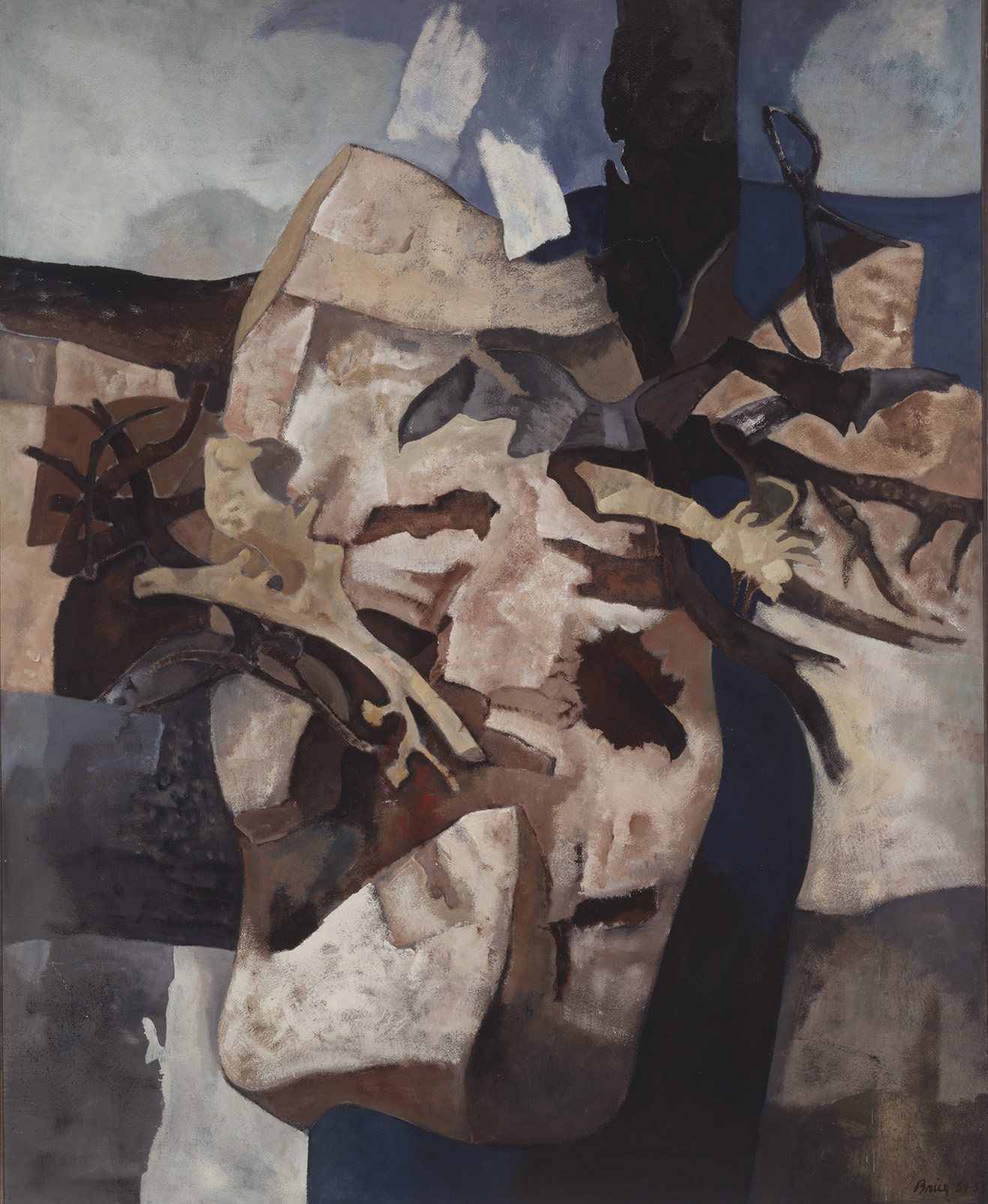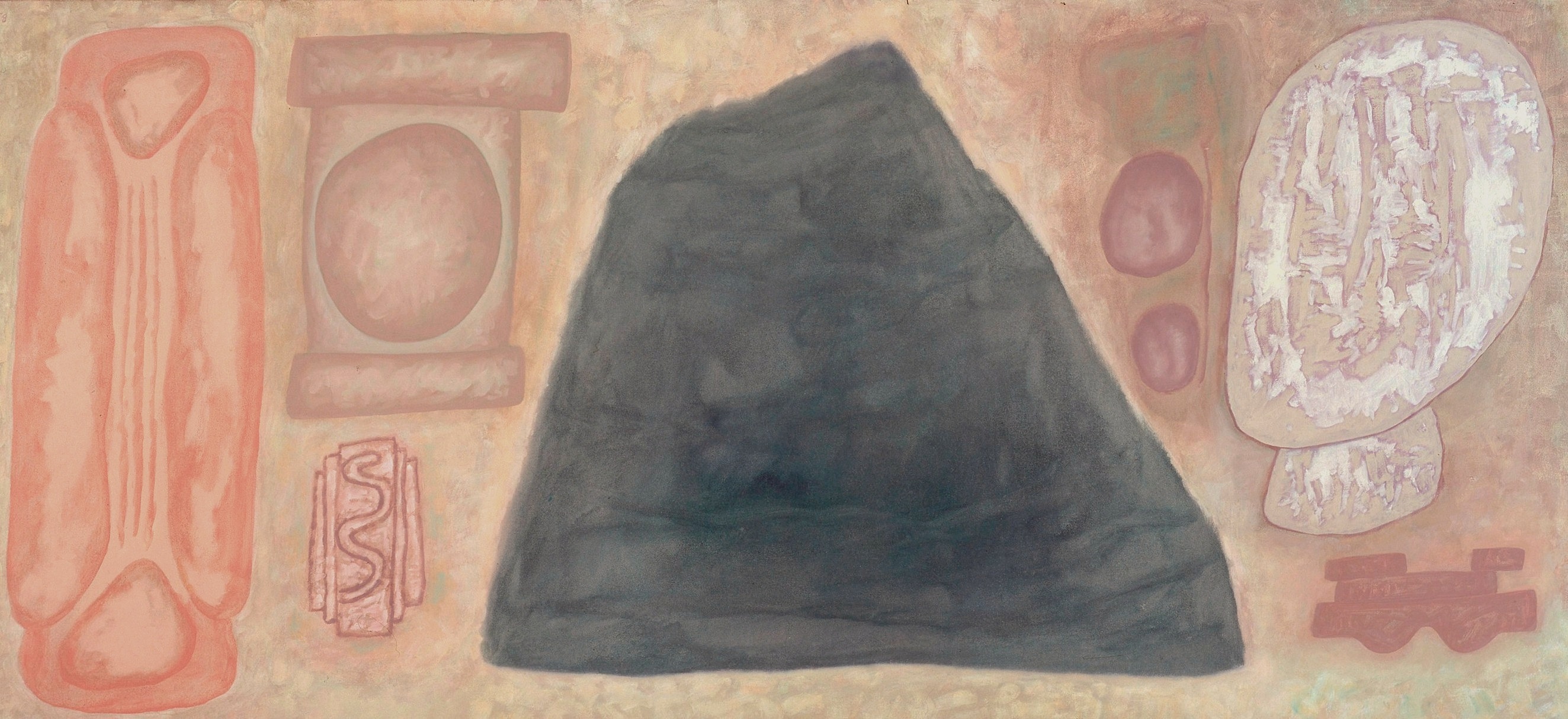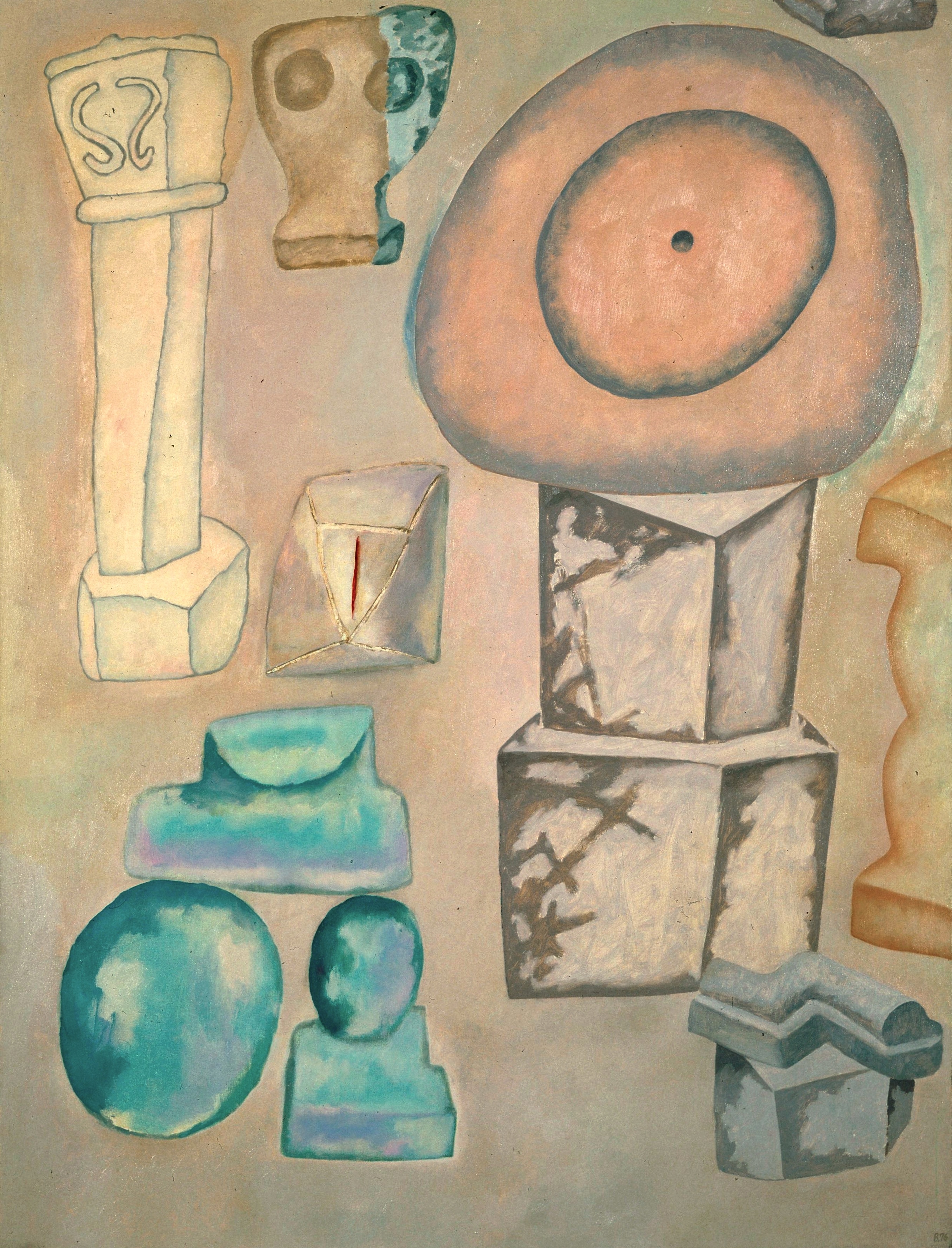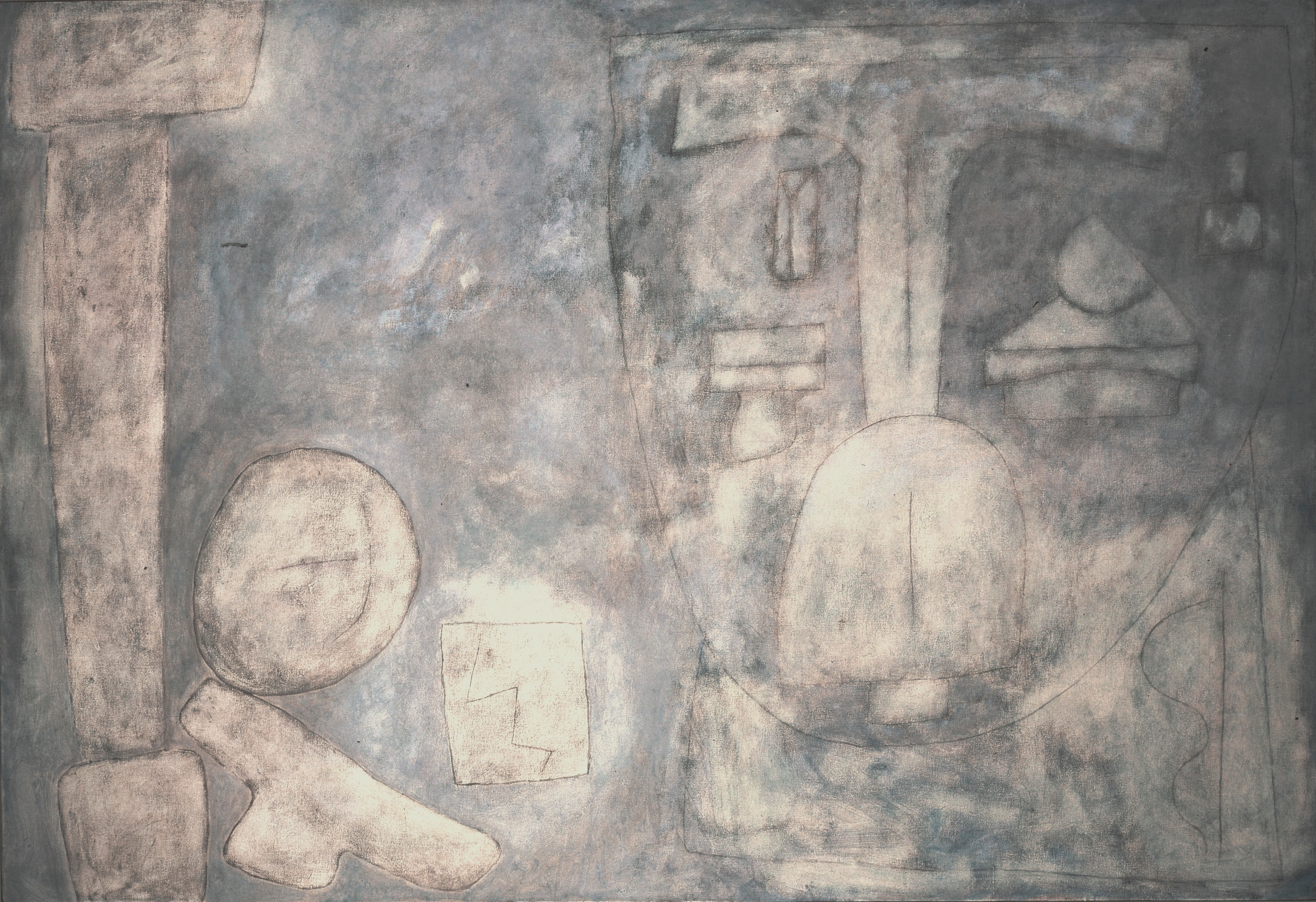The floral images grew increasingly fragmentary. In reaction I moved on to something more substantial, more tactile: abstractions of land and sea. I wanted something expansive suggesting panorama yet permitting the proximate sensation simultaneously. I found that painting a landscape from a given point of view defeated what I was searching for. I assembled incidents gathered from various sites. I was attracted to Mulholland Ridge. There were no houses up there at that time and I could see that long span of twenty or thirty miles as it had once been beneath the Pacific. It was elemental, primordial. I was intrigued by how a bush rooted itself into the side of the hill, how the land eroded from it: the bush’s tenacity, its insistence on existing. The sheer drop of the cliffs at Big Sur also fascinated me. I found I could alter the axis of my painting as I worked on it. I was painting in an area of abstraction where I could convert a form from rock to cloud. Solid organic things were malleable.
WB: Yes. Later in the land-sea paintings, the land is parched, yet the sea’s right there. I wanted those paintings to be walls. I ground the whole surface with desert sand. It wasn’t the idea of varying the surface, using sand as a cubist might, but really to have a surface that would be like a mortared wall. The surfaces of frescoes had always appealed to me. I have never been primarily concerned with transparent application that is, glazing. I tend toward density of pigment, even when it is not heavily applied.
JK: What about the figure in your work?
WB: During the late Forties, up to about 1956, or from the time I first started, I drew from the figure. But with the exception of one early painting in 1945, one or two, I did not paint the figure. I drew from the model. At that time I did not find a basis for the figure in my painting. Images of rocks, flowers, land, sea, etcetera, occupied me totally. In 1955 I made drawings of people. They were not portraits, not likenesses, but interpretations.
The forms become entwined and forever locked together in a symbolic embrace.” That review covered work between 1955 and 1961.



